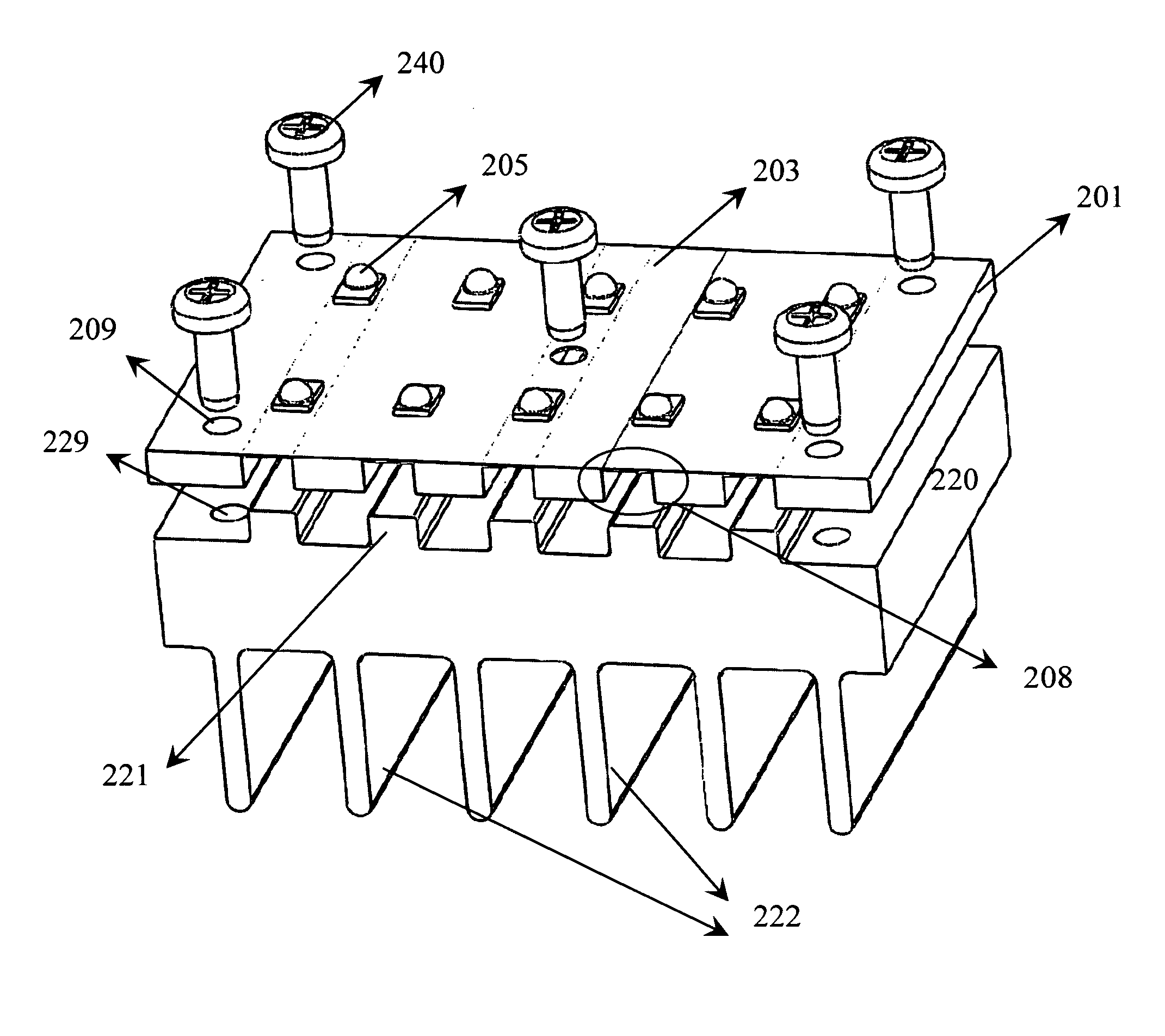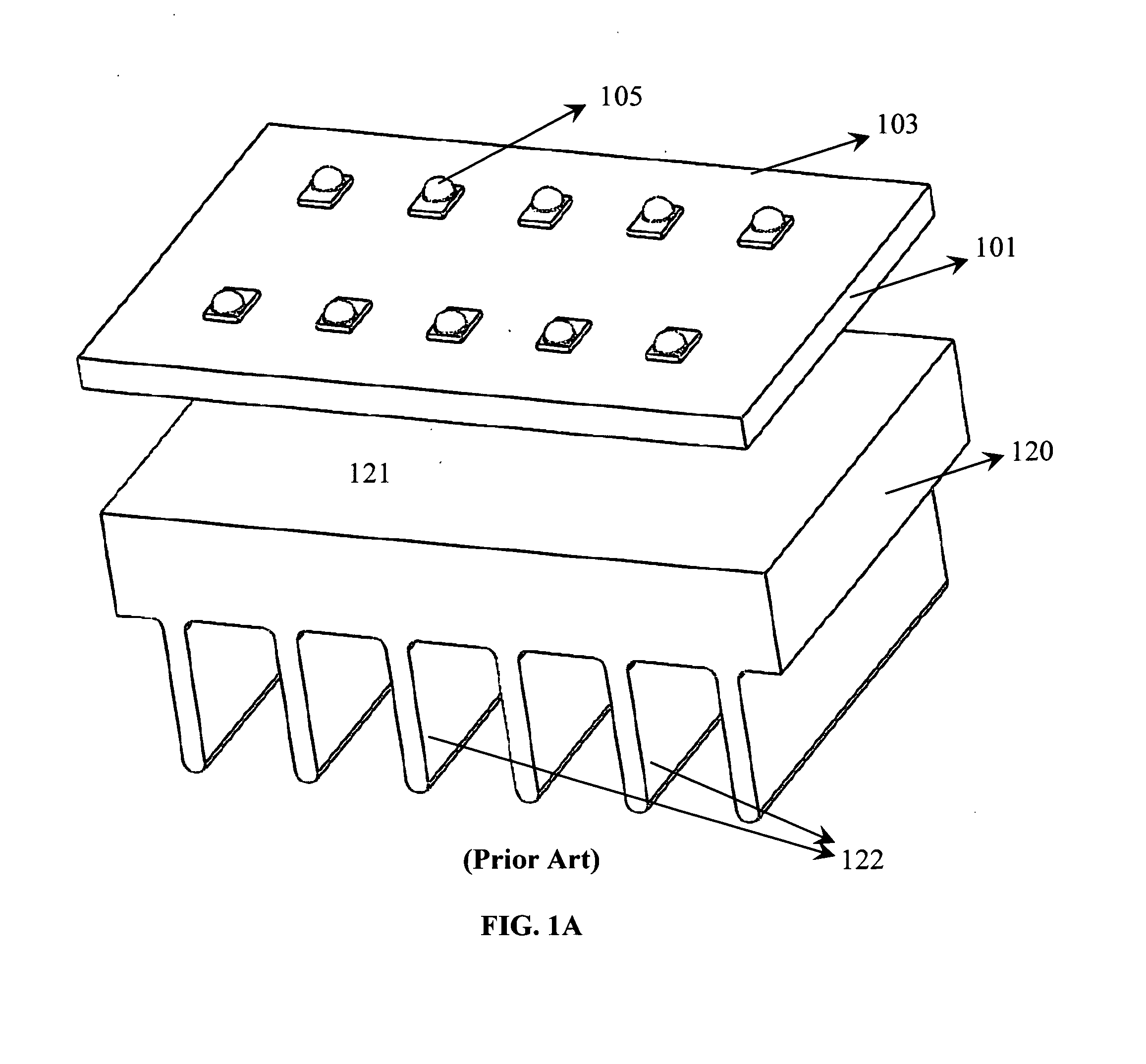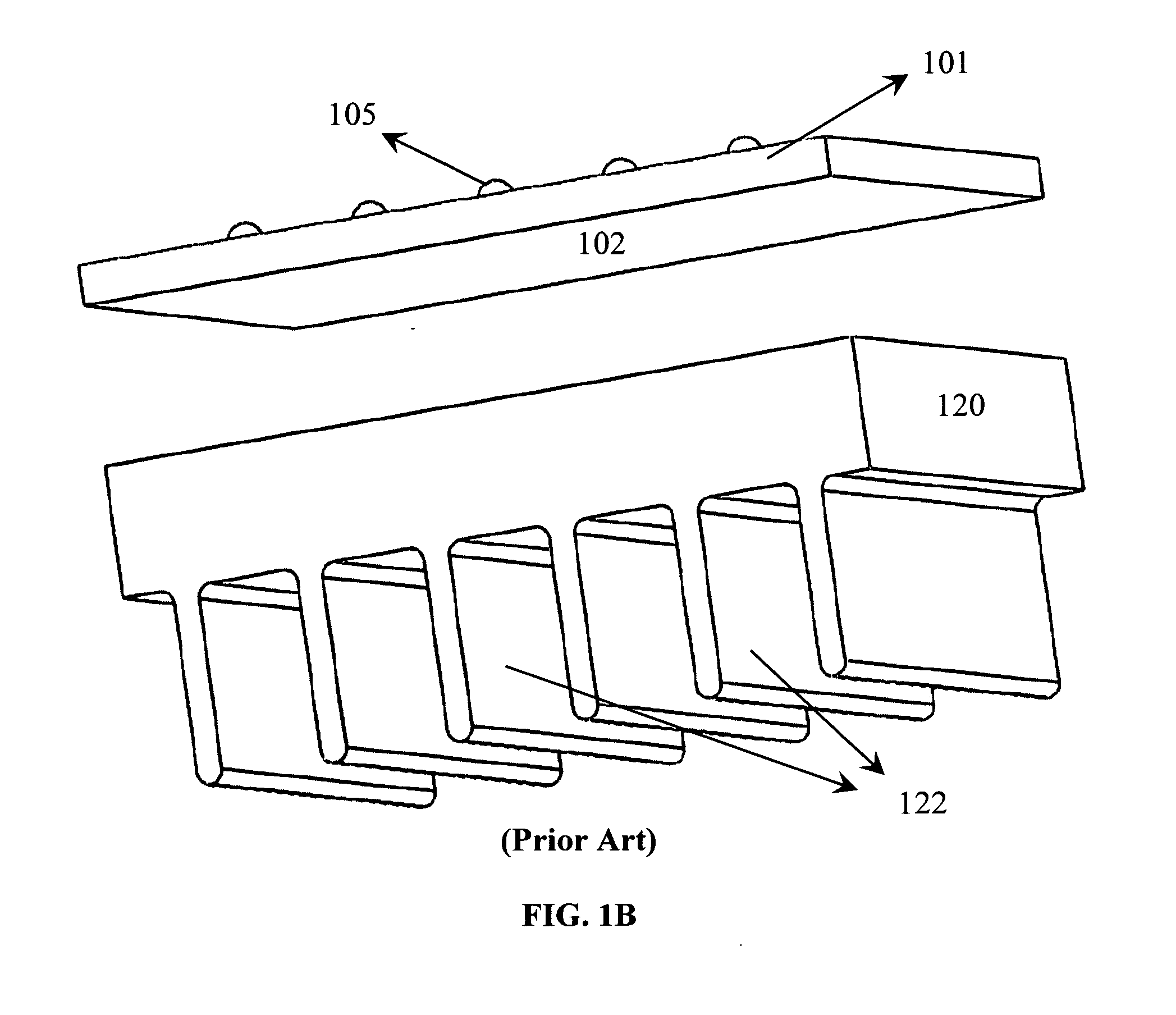Composite Heat Sink For Electrical Components
a heat sink and electrical component technology, applied in semiconductor devices, light sources, light-emitting devices, etc., can solve the problems of limiting the range of metals, limiting the heat conduction range, and reducing the thermal performance of metal core printed circuit boards. achieve the effect of strong mechanical connection
- Summary
- Abstract
- Description
- Claims
- Application Information
AI Technical Summary
Benefits of technology
Problems solved by technology
Method used
Image
Examples
Embodiment Construction
[0020]Printed circuit boards are commonly made using rigid composite materials such as FR4 or CEM. These materials have excellent electrical insulating and dielectric properties. They are also physically strong and rigid and have excellent flame resistance. The term FR4 derives from Flame Retardant type 4. They are also inexpensive.
[0021]This host of attractive features and properties is balanced against a significant weakness-low thermal conductivity. FR4 has a through plane thermal conductivity of about 0.29 W / m° K. This stands in stark contrast to aluminum alloys commonly used to produce aluminum core printed circuit boards. These aluminum alloys have thermal conductivities that range from about 100 W / m° K to about 180 W / m° K. This makes these materials about 300 to about 600 times better thermal conductors.
[0022]The units of thermal conductivity are W / m° K. Knowing this, the thermal resistance across a given thickness of material can be calculated by multiplying the thermal cond...
PUM
 Login to View More
Login to View More Abstract
Description
Claims
Application Information
 Login to View More
Login to View More - R&D
- Intellectual Property
- Life Sciences
- Materials
- Tech Scout
- Unparalleled Data Quality
- Higher Quality Content
- 60% Fewer Hallucinations
Browse by: Latest US Patents, China's latest patents, Technical Efficacy Thesaurus, Application Domain, Technology Topic, Popular Technical Reports.
© 2025 PatSnap. All rights reserved.Legal|Privacy policy|Modern Slavery Act Transparency Statement|Sitemap|About US| Contact US: help@patsnap.com



